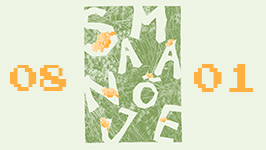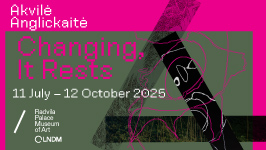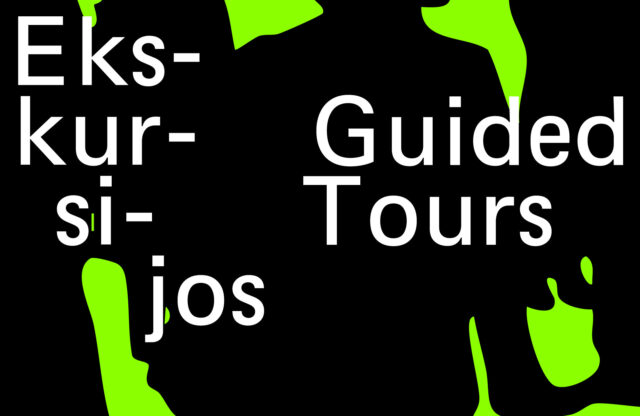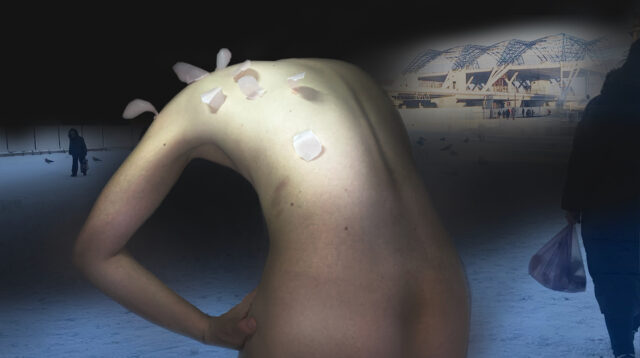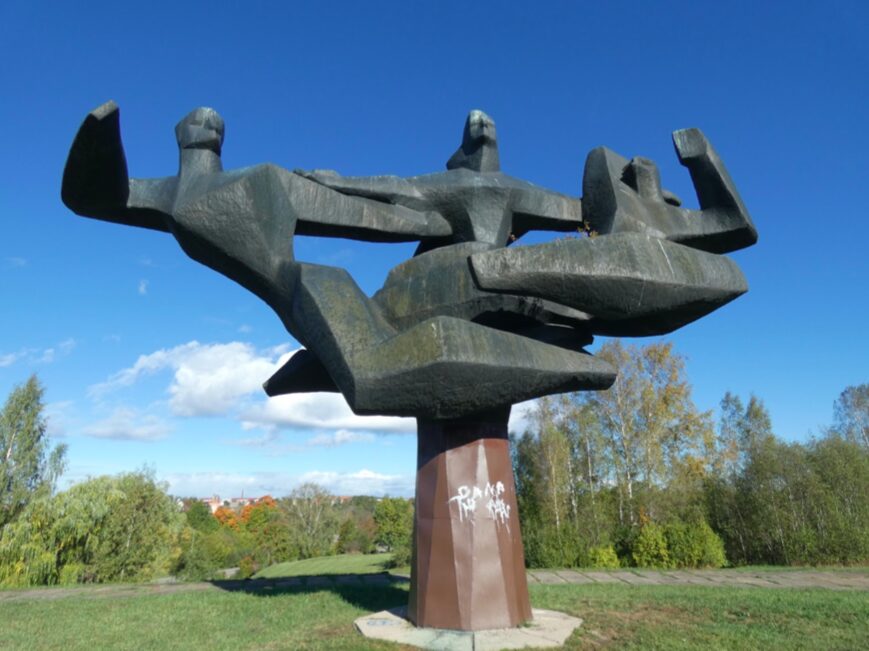For a certain mindset, it is possible to imagine all contemporary art exhibitions lining up on a grand scale, from pure activist struggle all the way to being a distraction from the plight of the oppressed and the agony of the planet. An exhibition under a title like ‘The Sex Lives of Fruit Flies’ might not come across as being in the vanguard of political consciousness. Yet the exhibition under this exact title at the Low Gallery in Riga, which ran from 25 August 2021 to 30 September 2021, and was curated by Valentinas Klimašauskas, makes a number of nods to contemporary preoccupations to leave its position on such a scale distinctly ambiguous.
The exhibition’s tabloid title can, first of all, be seen as a gesture towards the repetitive, unimaginative or overly poetic titles that are still too common in the art field. It is also an appropriation of popular online culture: according to the curator’s text,[1] a found clickbait. Irrespective of whether it generated any extra conversions, the title does set the exhibition visit on a humorous trajectory. It also succeeds in spawning the idea that the exhibition has to do with a species of insect. The accompanying text and the works in the exhibition do not immediately contradict this idea, giving rise to certain expectations, especially in light of the resurgent interest in non-human life forms.
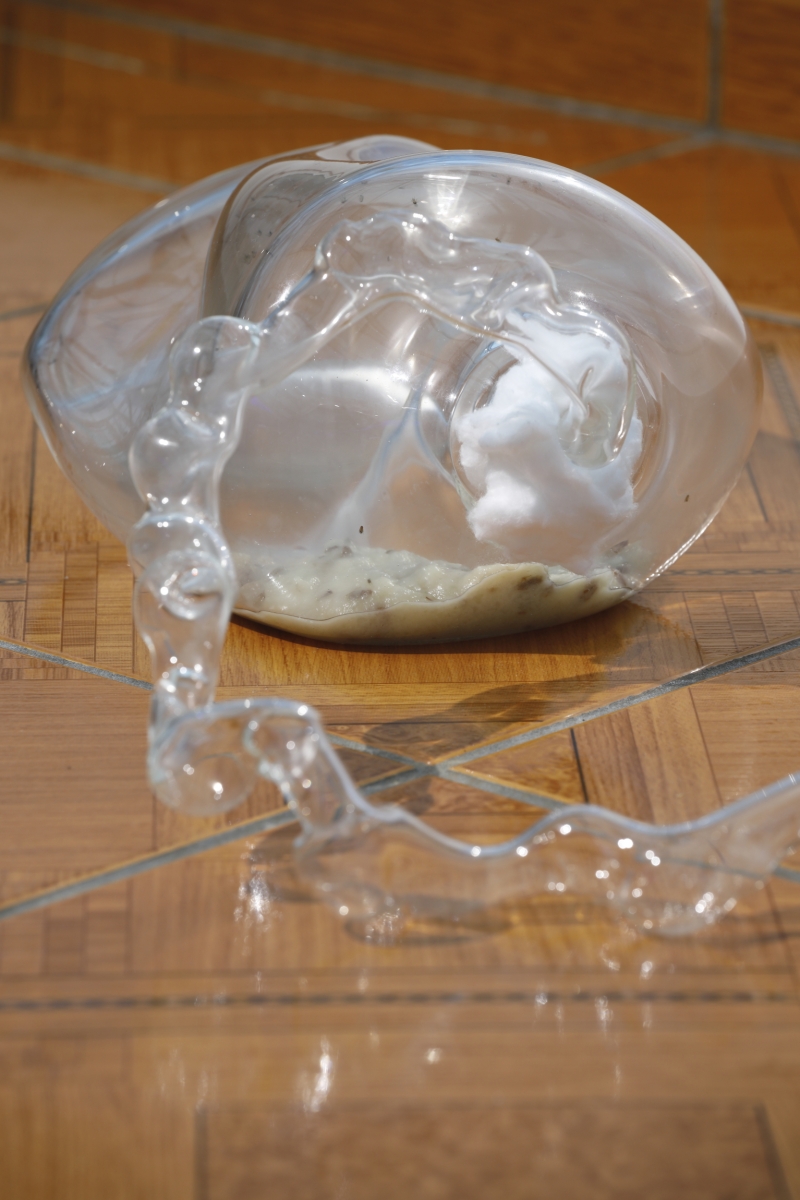
Mark Eckstrand and Kamilė Krasauskaitė “Our Beautiful Homes”. Glass objects and fruit flies. 2021. Photo: Ansis Starks
While insects are no strangers to human culture, flies, in this case fruit flies, or Drosophila melanogaster, are not the most typical choice. In human minds, they do not appear to have the diligence of ants or bees, the fetishist appeal of the praying mantis, the religious appeal of the scarab, or the spider’s ability to produce webs, as well as new forms of cross-species knowledge. While having butterflies in one’s stomach may be a sign of excitement, and in the European Union an increasing number of insects are being approved for human consumption, flies are a metaphor for dropping dead. They are common and intimately familiar, yet exist as a blurry conflation of multiple species, some of which transmit deadly diseases, while others are merely a byword for questionable cleanliness, poverty or deprivation.
Giving a voice to the downtrodden is a worthy goal, and a favourite pastime in contemporary culture, not least as a sign of appreciation for natural diversity. Yet, while the curator’s text deals almost exclusively with fruit flies, its language hardly represents the familiar glorification of radical new inter-species communion or non-human perspectives. While it is pointed out that fruit flies are useful for research precisely because they are very much like humans, the research that the text refers to resembles the science of the ‘scientists have discovered’ articles from the less serious part of the daily news headlines. In experiments that would likely be seen as outrageous if performed on a human or a larger mammal, these fruit flies are the tragi-comic heroes of what could make a funny story for an awkward moment of silence, or a joke video to watch on public transport.
This is a fairly dark kind of humour, which leads to uncomfortable reflections. To be sure, not taking existing knowledge entirely seriously is an essential part of the scientific tradition. Furthermore, a society where all kinds of authorities cannot be questioned, inside as well as outside the special field of play that is culture, can hardly be considered free. At the same time, it seems that there is a horizon beyond which the trivialisation or outright dismissal of the best science available to humans has real-life consequences, and that this horizon has become considerably more concrete and measurable in the context of the Covid-19 pandemic. From this perspective, it seems regrettable and fairly inappropriate that there are exhibitions which seem happy to share strategies and mythologies with conspiracy theorists, populists and an assortment of charlatans. Here, however, the overall tone might be said to be closer to the practice of prefacing art projects with random bits of science, and the complimentary practice of using random works of art, often uncritically, as introductory anecdotes for non-art research and theory.
In any case, a certain quasi-scientific aura extends beyond the text and into the exhibition space. Easy to miss at first, but difficult to forget afterwards, on the gallery’s desk there is the USB stick-shaped Rectal Candle,[2] an experimental object of hypothetical diet-monitoring functionality, together with its accompanying video. It utilises the visual language of a research prototype and its connotations of rational development and usefulness, while also invoking the wellness industry with its distinct ambivalence towards factual truth. Several banks of gender-signed glass tubes present an older laboratory aesthetic, as do the two pairs of custom-made kidney-shaped glass containers,[3] conveniently bringing the wave of arts and crafts revival into the conversation. Inhabited by scores of living fruit flies, these vessels seem to be the props not so much of fundamental genetics or research into the development of tissues and organs, mentioned in the text, as ethnography, with its tradition of hierarchical classification, marking and putting on display. In the words of the exhibition text, ‘Fruit flies are popular among the scientific community because they are expendable, easy to control, count, monitor, and have clearly expressed genders.’[4] They are exactly the kind of insect a supremacist might use to dehumanise another.

Exhibition view. Photo: Ansis Starks
The exhibition might, however, be said to go further than most in engendering actual human identification with insects. Contrary to one type of recent insect-themed exhibition, this is not an attempt to encourage visitors to appreciate the insects’ body hair, the flaky surfaces of their legs, or similar formal aspects (although there is a charming typographical fly motif in both the printed and digital versions of the exhibition text, while the grille of the free-standing speaker system in the centre of the space might suggest an enlarged fly’s eye). Since the actual fruit flies inside the glass containers are almost too small to be perceived, at least from an upright, two-legged position, a conceptual, literary, metonymic[5] presence can be considered instead, as exemplified by a group of drawings by children who were asked to imagine housing for fruit flies.[6]
If, when prompted by an adult in an educational setting, a child could imagine what a fruit fly might want or like, the eye-centred, independent adult exhibition visitor may better respond to almost unconscious, spatial stimuli. These children’s drawings are installed not only on vertical surfaces but also the gallery’s floor and slanted glass ceiling. After a moment’s disorientation, it is not particularly difficult to notice certain parallels. Just like the flies, the exhibition’s visitors find themselves drifting inside a glass container,[7] while possibly being observed from the other side of the street. Hence the custom-baked bread, in this case, sourdough with twigs,[8] might not only represent another instance of a staple of the contemporary art circuit, but also the act of scavenging for food in unfamiliar environments.
To follow the exhibition’s text, the lives of fruit flies in their banana houses revolve around sexual pleasure. In a non-contemporary art context, this might have been a further factor in making fruit flies more approachable, or more ‘human’, as it were. Here, however, the focus is squarely on heterosexual male pleasure. The curator makes a rhetorical nod to this bias, before proceeding along the original path, even though a lazy internet search would have produced descriptions of research on, for example, homosexuality among fruit flies. The exhibition also misses the opportunity to highlight any gender fluidities that might arise from the neutered male fruit flies from one of the referred experiments. Instead, like a missionary encountering another culture for the very first time, it focuses on details that make the sexual practices of fruit flies appear extravagant and exotic.

Helena Heinrihsone. “Yellow”. Oil on canvas, 100×100 cm. 2005
If there is something transgressive, almost carnivalesque, in this phallocentrism, the mood is further developed in the three paintings by Helēna Heinrihsone, who made her name in the final decade of the Latvian SSR with brightly coloured work that has come to be seen as moderately feminist and erotic. In 2 Dancers, a pair of figures are lost in tribalistic movement, while a large, contorted skull lurks in the background (Orange). Heinrihsone’s third painting, Yellow, is a large vulvic flower that has been installed in the corner of the gallery, in the position of both the Black Square and the Orthodox icon, providing a home altar for the worship of genitalia, as well as the medium of painting.
While there may be an amount of insider humour in the inclusion of establishment painting in a distinctly contemporary context, it does not necessarily imply a reinterpretation or rediscovery. Instead, it is reminiscent of the politics of retrowave (aka synthwave), a genre of electronic music that mimics the sensibilities of the 1980s, but was produced recently. The exhibition’s earworm soundtrack, coming from Adrian Ganea & Chlorys’ My bacterial self helps me sleep, an immersive, always-already-on digital video, contributes a further layer of catchy nostalgia. In the video, biomorphic 3D-animated characters, in colours not unlike Heinrihsone’s, groove to a narrative of longing for a purer, cleaner, more harmonious way of being. A kind of pink-purple-and-golden age, without today’s bloated hierarchies between humans and others.
With its part-generated, part-realistic landscape, and fluid, shape-shifting, post-human language about a return to a bacterial state, the video constitutes the exhibition’s most conventional narrative and aesthetic element. As a whole, though, the exhibition is conspicuously short of the unencumbered pathos in which similar themes are routinely packaged. It nods to contemporary sensibilities, while retaining a considerable amount of ambivalence, possibly lacking the steadfast conviction of current activist rhetoric and methods. Instead, there is a certain nostalgia, wry humour and a tad of that moderation, perhaps even disorientation, which tends to come with years. A stage where it is not inconceivable to ask whether the bacteria that some seek to befriend might not in fact turn out to be identarian incels.
The fruit fly, as it is represented in the Low Gallery’s ‘The Sex Lives of Fruit Flies’, is hardly a ‘metonymy for the non-human’.[9] Rather, it is as dead as the insects that the pioneering animator and one-time Kaunas and Tartu resident Ladislas Starevich used to tell moralistic stories such as ‘The Grasshopper and the Ant’[10] (1913) or ‘The Cameraman’s Revenge’[11] (1912). The insect is still a mere prop for human fantasies, – either of a more equitable world, a new kind of politics or aesthetics, or plain old sexual intercourse. The best hope, perhaps, is that this is merely a Western problem of perception.
Photo documentation from the show ‘The Sex Lives of Fruit Flies’, Low Gallery, Riga

Promotional gif by Nerijus Rimkus
[1] Curator’s text available at: http://www.low.gallery/2021/the-sex-lives-of-fruit-flies/ (accessed: 05/12/2021).
[2] Mindaugas Gapševičius Rectal Candle. In cooperation with Martin Schied. Electronic device, display with animated GIF. 2020/2021.
[3] Mark Eckstrand and Kamilė Krasauskaitė Our Beautiful Homes. Glass objects. 2021.
[4] Curator’s text.
[5] According to the curator’s text, ‘Something very common for this time of the year — a fruit fly, — could be used as the metonymy for the non-human.’
[6] Proposals for fruit fly housing. Drawings on paper in various sizes by pupils of the Beržai progymnasium in Panevėžys and children from the Algimantas Bandza Social Services Home. 2021.
[7] The curator’s text describes an experiment as a result of which fruit flies ‘drift from test tube to test tube not knowing what time of day it is.’
[8] Kamilė Krasauskaitė Becoming. Bread sculpture. 2021.
[9] Curator’s text.
[10] Available at: https://www.youtube.com/watch?v=XMq5mozoYxg (in Russian).
[11] Available at: https://www.youtube.com/watch?v=EJEgbWEZWj4 (in Russian).




